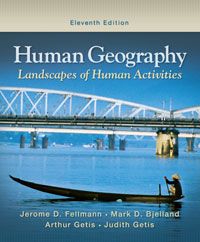1.
A) commodities B) ideas C) people D) all of these E) none of these 2.
A) complementarity B) transferability C) intervening opportunities D) orienteering 3.
A) complementarity B) transferability C) intervening opportunities D) none of these 4.
A) Yes B) No 5.
A) complementarity B) transferability C) intervening opportunities D) none of these 6.
A) population B) culture C) mode of travel D) terrain E) "B" and "D" 7.
A) homogenous B) vernacular C) perceptual D) uniform E) functional 8.
A) Yes B) No 9.
A) circulation B) migration C) both of these D) none of these 10.
A) stage in life course B) ability to travel C) intervening opportunities D) all of these E) none of these 11.
A) True B) False 12.
A) Yes B) No 13.
A) Yes B) No 14.
A) intervening opportunity B) complementarity C) transferability D) all of these 15.
A) forced migration B) reluctant migration C) voluntary migration D) all of these 16.
A) forced migration B) reluctant migration C) voluntary migration D) not given 17.
A) Yes B) No 18.
A) family B) friends C) neighbors D) all of these E) none of these 19.
A) counter migration B) step migration C) chain migration D) channelized migration 20.
A) complementarity B) transferability C) intervening opportunity D) none of these 21.
A) Ullman. B) Reilly. C) Newton. D) Ravenstein. E) Malinowski. 22.
A) under 15 years of age B) 15-39 years of age C) 39-65 years of age D) over 65 years of age 23.
A) In some cases, 20% of the money in a national economy may be the result of remittances. B) As of 2004, it was estimated that Central and South American immigrants to the U.S. remitted $30 billion to their places of origin. C) A 2005 estimate places the worldwide amount of remittances at $167 billion, not including money sent via untraceable methods. D) The amount of money is very small since immigrants typically do not remit more than a very small percentage of their income. 24.
A) The predicted amount of interaction between any two places is proportional to the product of their population. B) The predicted amount of interaction between any two places is inversely proportional to the squared distance between the two places. C) The source of Carey's inspiration was Isaac Newton's law of universal gravitation. D) Places with larger populations exert a greater "attraction" on one another and can be expected to interact more than those with smaller populations. E) All of the above are correct. 25.
A) "Everything is related to everything else, but near things are more related than distant things." B) Distance and interaction are inversely proportional, a fact that results in a J-curve when their relationship is graphed. C) Distance has a friction-like effect on interactions. D) All of the above are true. 26.
A) True B) False 27.
A) outside your awareness space, but inside your knowledge space. B) inside your activity space and your awareness space. C) within your personal space. D) inside your activity space but not part of your recognition space. 28.
A) personal activity space. B) mass communication. C) communication hierarchy. D) personal communication field. 29.
A) chain migration. B) step migration. C) relocation diffusion. D) channelized migration. 30.
A) a spatial search. B) guest worker migration. C) aspirational migration. D) return migration.





